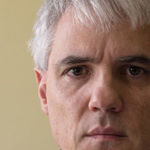 Adobe Community
Adobe Community
- Home
- Lightroom Classic
- Discussions
- Re: CTRL-Z goes too far when painting first brush ...
- Re: CTRL-Z goes too far when painting first brush ...
Copy link to clipboard
Copied
A little more clearly, this is the problem I have:
When I'm adding to or subtracting from a mask, let's say I make my first brush stroke which doesn't really work out how I was hoping. Pressing CTRL-Z doesn't just undo that first brush stroke, it completely deletes the subtract or addition mask that I just created. All I want is for CTRL-Z to remove that first brush stroke but it's removing the mask altogether - an action that should happen only when hitting CTRL-Z, Z (the brushstroke then the mask itself).
Running Windows 11 (latest) and LRCC (latest).
 1 Correct answer
1 Correct answer
When you haven't yet placed any brush strokes at all, then no need to even make a mask to house those, has yet arisen. So LrC resists making non functional and likely redundant mask layers 'empty'. That is consistent IMO with how you can't have a gradient filter mask in existence, that does not have any gradient filter placed within it. I think using Crlt+Z after your first brush mark (only), has brought you 'back in time' to that same situation. LrC can't distinguish an uncertainty about where,
...Copy link to clipboard
Copied
Since you've only applied one brush stroke when you use the Ctrl+Z (Undo), then what you describe is expected behaviour. This because the first brush stroke and mask are treated one and the same. The same behaviour occurs for all masks including AI. You can easily check in History.
You can work around the issue by applying a placing brush dab, then stroking.
Copy link to clipboard
Copied
Thanks Ian, but wouldn't you agree that placing a brush dab to circumvent this behavior shouldn't be considered a 'normal' solution? I know that this may be 'expected' behavior but logically, the brush stroke and mask creation should really be seen as two different actions altogether. We both agree that it's an issue, so maybe Adobe might recognize it as such, too, and fix it.
Copy link to clipboard
Copied
When you haven't yet placed any brush strokes at all, then no need to even make a mask to house those, has yet arisen. So LrC resists making non functional and likely redundant mask layers 'empty'. That is consistent IMO with how you can't have a gradient filter mask in existence, that does not have any gradient filter placed within it. I think using Crlt+Z after your first brush mark (only), has brought you 'back in time' to that same situation. LrC can't distinguish an uncertainty about where, from an uncertainty about whether. And it doesn't know whereabouts in the image to place a 'brush' icon representing this mask layer, since that first brush dab has been cancelled away. This is all familiar, as-previous behaviour.
Perhaps it is logical with brush layers in particular, to allow them to be created 'empty' e.g as a blank template Mask to then be synced onto other images. There's some merit in that - though an easy workaround is to place a mark then erase it rather than undoing it. But if you want, you can add this as a Feature Request.
Copy link to clipboard
Copied
Thanks, Richard. What you explain certainly makes sense from a gradient/radial filter point of view. That seems logical. I think we're on the same page regarding the logic and slight benefit behind simply being able to keep a brush mask 'empty' until the brushing has begun.
I'll make a feature request. Thanks for your reply.
Copy link to clipboard
Copied
Another way to make an apparently "blank" brush layer that you can sync to other photos as a starting point, could be to place a single brush mark and then to move the mask layer to put this mark outside of the picture area. Then you don't have to erase it.
I do quite like the idea of a systematic set of ready-to-paint-on local adjustments, each one with its starting adjustments set and named as "dodge" or "burn" or whatever, that can then be synced in or added via preset.

